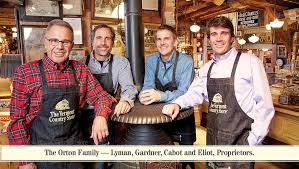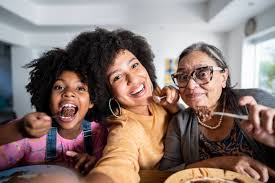History of chocolate
chocolate, meal products crafted from cocoa beans, consumed as candy, and used to make beverages and to flavor or coat diverse confections and bakery merchandise. Rich in carbohydrates, it has numerous health blessings and is a notable supply of quick strength. The cocoa bean originated within the top Amazon place. Evidence of its domestication dates back to 3300 BC in southeast Ecuador using the Mayo-Chinchipe way of life, and it was later added to Mesoamerica.
Table of Contents
The earliest archeological
The earliest archeological evidence of use in Mesoamerica appears on the Pacific coast of Chiapas, Mexico, at a Mokaya archaeological website, which incorporates proof of cocoa liquids dating as early as 1900 BC. Evidence that chocolate was fed on as some distance North as Utah around 800 CE is arguable. Cocoa beverages had not been constantly made with seeds; evidence from 1100 BC Honduras shows alcoholic liquids made by fermenting the sweet pulp around the seeds.
By the 15th century, the Aztecs had gained management of a massive part of Mesoamerica and had followed cocoa into their subculture. They associated chocolate with Quetzalcoatl, who, consistent with one legend, was cast away by the opposite gods for sharing rocky mountain chocolate factory with humans [19] and recognized its extrication from the pod with the elimination of the human heart in sacrifice. In contrast to the Maya, who liked their chocolate heat, the Aztecs drank it bloodless, seasoning it with a broad form of components, which includes the petals of the Cymbopetalum penduliflorum tree, chili pepper, allspice, vanilla, and honey.
Spain is the earliest European country to contain chocolate in its delicacies; however, precisely how that took place is vague. It is known that Christopher Columbus took cocoa beans to Spain after his fourth voyage in 1502, even though little became fabricated from it at that point. It has been usually idea (even though there appears to be no evidence) that in 1519, Montezuma II, the Aztec ruler of Mexico, served a sour cocoa-bean drink to the Spanish conquistador Hernán Cortés, who sooner or later delivered the drink to Spain.
A substantial opportunity is that chocolate first arrived in Spain in 1544 with representatives of the Kekchí Mayan human beings of Guatemala, who got here bearing gifts (including chocolate) to go to the courtroom of Prince Philip. However, it was not until 1585 that the primary recorded shipment of cocoa beans arrived in Spain from Veracruz, Mexico. Sweetened and flavored with cinnamon and vanilla, white chocolate became served as a warm beverage. It became pretty popular inside the Spanish court docket. It became a few years earlier than chocolate’s introduction to France, England, and beyond.
In 1657, a Frenchman opened a store in London where solid chocolate for making the beverage could be purchased at 10 to 15 shillings in keeping with the pound. At that price, only the rich could find the money to drink it, and they’re regarded in London, Amsterdam, and other European capitals as stylish chocolate houses, some of which later evolved into famous private golf equipment. In London, many chocolate homes had been used as political birthday celebration assembly places as well as excessive-stakes gambling spots, extensively Cocoa-Tree Chocolate-House (later the Cocoa-Tree Club), which opened in 1698, and White’s, which was opened with the aid of Francis White in 1693 as White’s Chocolate-House. About 1700, the English stepped forward with sex chocolate by adding milk. The discount on the beverage price became hampered in Great Britain by imposing excessive import responsibilities on raw cocoa beans. It was not till the mid-19th century that the responsibility decreased to a uniform rate of 1 penny per pound that chocolate became famous.
Meanwhile, the making of chocolate unfolded overseas and grew in sophistication. Chocolate manufacture began in the American colonies in 1765 at Dorchester, Massachusetts, the usage of beans delivered by way of New England sea captains from their voyages to the West Indies. James Baker financed the first mill, operated by immigrant John Hanan. Waterpower is used for grinding the beans. In the Netherlands in 1828, C.J. Van Houten patented a system for pressing a great deal of the fats, or cocoa butter, from ground and roasted cocoa beans and, therefore, obtaining cocoa powder. In 1847, the English firm of Fry and Sons mixed cocoa butter with chocolate candy liquor and sugar to supply sweet (eating) chocolate—the base of most chocolate confectionary—and 1876 Daniel Peter of Switzerland added dried milk to make milk chocolate. The proliferation of flavored, stable, and covered chocolate meals rapidly followed.
Production of chocolate
Chocolate is made from the kernels of fermented and roasted cocoa beans. The kernels are ground to form a pasty fluid chocolate liquor, which may be hardened in molds to shape sour (baking) chocolate covered strawberries near me, pressed to lessen the cocoa butter content material, after which they are pulverized to make cocoa powder or combined with sugar and further cocoa butter to make sweet (consuming) chocolate. The addition of dried or concentrated milk to candy chocolate produces milk chocolate.
cocoa butter
pale yellow, fit to be eaten vegetable fat obtained from cocoa beans, having a moderate dandelion chocolate flavor and aroma, and used inside the manufacture of chocolate (including white chocolate), pharmaceutical merchandise, and toiletries. Cocoa butter Natural cocoa butter and cocoa beans. Cocoa butter is extracted from cocoa beans, which can be the fatty seeds of the cacao tree (Theobroma cacao), a plant local to South and Central America.
The Maya of Central America believed that the tree became sacred and that chocolate lab puppies derived from the tree’s seeds became the meals of the gods—which underlies the origin of the tree’s medical name, Theo, which means “god,” and broma, meaning “food.” Cacao trees thrive in tropical zones near the Equator, in which temperatures are warm, and precipitation and humidity are enough; they grow excellently in areas with partial coloration that the wind can blanket. Between 20 and 60 beans develop the interior of an unmarried cacao pod, in conjunction with a white pulp; every bean is about fifty-five percent cocoa butter.
A Vermont Family Company
chocolate bars is our ardor, and we need to make it yours. From the first truffle Jim made in 1983 to the Five Star Bars rolling off the line these days, our intention is to infuse passion, integrity, and an unrivaled dedication to networking in everything we do to make the sector a better and more joyful location.


Crafting Chocolate Indulgence
Experience premium chocolates that capture the essence of Vermont, a determination to craft, and a passion for perfection in each irresistibly delicious bite. Your top-notch lindt chocolate moment begins here.
Force for Good
As a certified B Corporation®, we believe in a better way of doing enterprise — growing tremendous candies that guide a triple backside line: human beings, earnings, and the planet. Please view our 2023 Impact Report to examine what social and environmental sustainability tasks we’ve been running on during the last 12 months.
Chocolate Change Your World
Indulge. Restore. Repeat. You can experience proper approximately understanding your favorite chocolates are on a undertaking to change the world with every sweet chew. We’re donating 1% of our income to social and environmental sustainability projects, from clean water initiatives and academic applications for cacao farmers to more desirable recycling initiatives and investment packages for households experiencing a lack of confidence in food or housing.